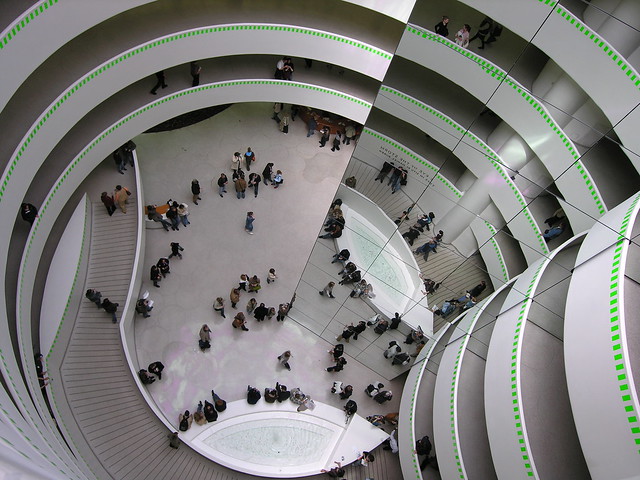By considering the art gallery as a circulatory experience, Frank Lloyd Wright designed the Guggenheim in New York as a continuous spiral upwards with a naturally lit atrium in the center. This unobstructed coil becomes larger the higher you go, which follows Wright’s idea of expanding procession through space. The building’s industrial, flowing form and small scale make it stand out on the edge of Central Park.
Completed in 1959, this project has been hailed as the museum’s return as an appropriate atmosphere for viewing art and integrating with the urban. The curvature of the art space poses a problem for mounting flat canvases, however, and the building’s scale doesn’t seem to integrate into the city.
Gwathmey Siegel recently provided a renovation and addition to the museum with anexterior restoration.

(Brian Hillegas– flickr/creative commons license)

(hamron– flickr/creative commons license)

(Mister-E– flickr/creative commons license)

(Mister-E– flickr/creative commons license)

(Alotor– flickr/creative commons license)

(Thomas Claveirole– flickr/creative commons license)

(Herkie– flickr/creative commons license)

(scalleja– flickr/creative commons license)

(PhillipC– flickr/creative commons license)

